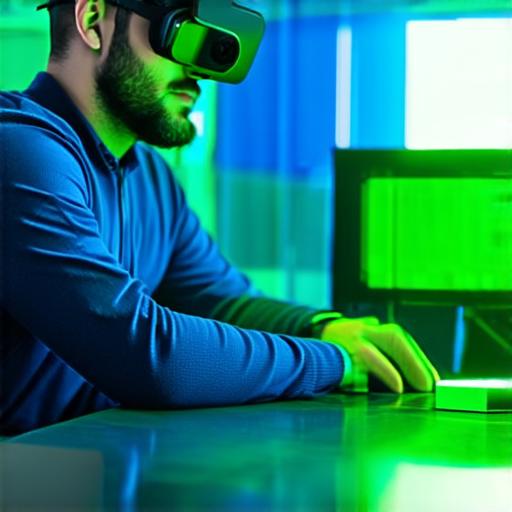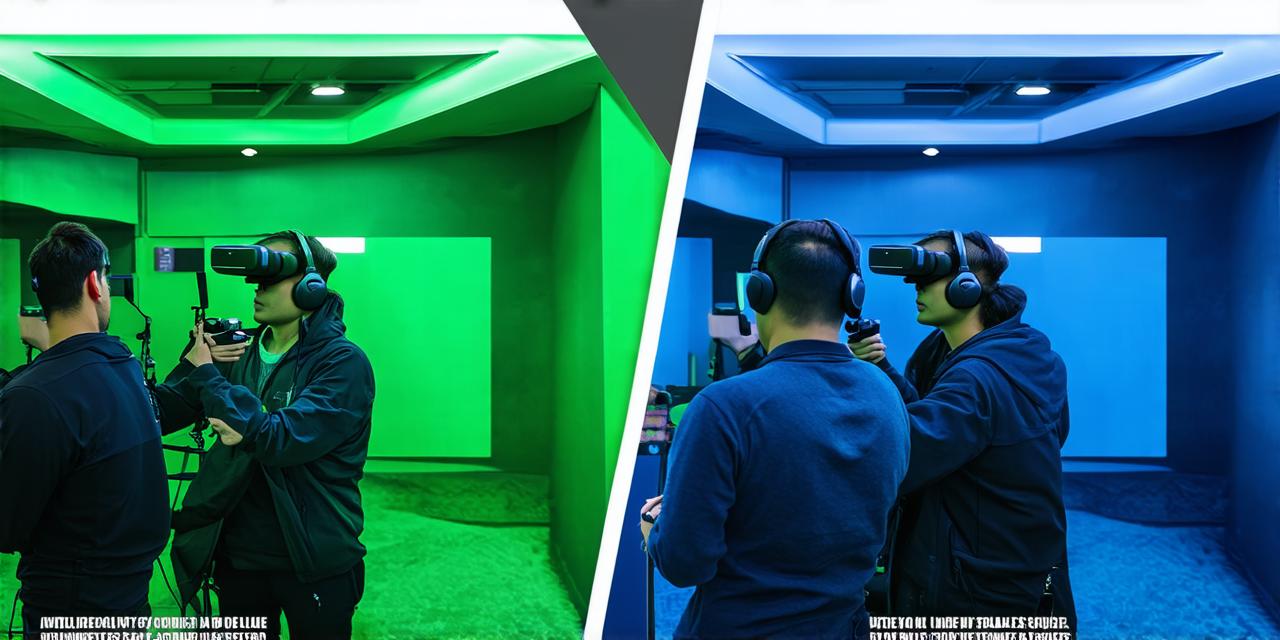Understanding Augmented Reality
Augmented reality is a technology that overlays digital information onto the real world, enhancing our perception and interaction with the physical environment. AR is different from VR in that it does not require a complete immersion into a virtual world but rather adds digital elements to the existing environment. This allows users to interact with both the real and virtual worlds simultaneously, creating an enhanced reality experience.
The Importance of Interactivity in Augmented Reality
Interactivity is a crucial aspect of augmented reality, allowing users to engage with digital content in real-time. AR enables users to interact with virtual objects, manipulate them, and even create their own content. This level of engagement makes AR an excellent tool for educational purposes, where students can learn through hands-on experiences that simulate real-world scenarios.
Understanding Virtual Reality
Virtual reality is a technology that creates an entirely immersive digital environment, allowing users to interact with and explore a completely artificial world. VR requires specialized equipment, including headsets and controllers, and typically involves a complete disconnection from the real world. In contrast, AR is designed to be integrated seamlessly into our daily lives.
The Importance of Immersive Experiences in Virtual Reality
Immersive experiences are a crucial aspect of virtual reality, allowing users to completely lose themselves in the digital world. VR enables users to explore vast landscapes, interact with virtual characters, and even create their own content. This level of engagement makes VR an excellent tool for entertainment purposes, where users can escape from the real world and immerse themselves in a new environment.
Differences between Augmented Reality and Virtual Reality
While both AR and VR have unique features and capabilities, there are several key differences between the two technologies. These include:
-
Level of Immersiveness: VR provides a highly immersive experience that completely disconnects users from the real world. In contrast, AR adds digital elements to the real world, allowing users to interact with both the real and virtual worlds simultaneously.
-
Equipment Requirements: VR requires specialized equipment, including headsets and controllers, while AR can be integrated seamlessly into our daily lives using smartphones or other devices.
-
Real-Time Interaction: AR enables real-time interaction with digital content, allowing users to engage with virtual objects and manipulate them. In contrast, VR typically involves pre-recorded experiences that may not allow for real-time interaction.
-
Applications: AR is best suited for tasks that require real-world interaction, such as education or healthcare. VR is ideal for entertainment and training simulations.
-
Cost: VR can be more expensive to implement, requiring significant investment in equipment and software development. In contrast, AR can be implemented at a lower cost using existing technology and software.
Real-Life Examples of Augmented Reality and Virtual Reality in Action
Augmented Reality
1. Snapchat Filters: Snapchat filters are an excellent example of AR in action. These filters allow users to add digital elements to their photos and videos, enhancing the overall experience.
2. Pokémon Go: Pokémon Go is a popular augmented reality game that allows users to catch virtual creatures in real-world environments.
3. AR Medical Training: AR can be used to provide medical students with hands-on training experiences, allowing them to practice surgeries and other procedures in a safe and controlled environment.
Virtual Reality
1. Oculus Rift: The Oculus Rift is a popular virtual reality headset that allows users to explore entirely artificial worlds. This technology has been used for gaming, entertainment, and training simulations.
2. VR Therapy: VR therapy has become increasingly popular in recent years, with patients using VR to simulate real-world scenarios and overcome phobias or anxiety disorders.
3. VR Product Visualization: VR can be used to create highly realistic product visualizations, allowing businesses to test products in virtual environments before launching them in the real world.
Conclusion
In conclusion, augmented reality and virtual reality are two cutting-edge technologies that offer unique features and capabilities. While AR provides real-time interaction with digital content in the real world, VR creates a highly immersive experience that disconnects users from the real world entirely. Both technologies have numerous applications across various industries, and their differences make them ideal for specific tasks. As AR and VR continue to evolve, we can expect to see even more innovative uses of these technologies in the future.
FAQs
1. What is the main difference between augmented reality and virtual reality?
The main difference between AR and VR is the level of immersion. AR adds digital elements to the real world, while VR disconnects users from the real world entirely.
2. What are some applications of augmented reality and virtual reality?
AR has applications in education, healthcare, retail, and more, while VR is ideal for entertainment, training simulations, and product visualization.
3. How does AR differ from traditional gaming?
AR enhances the gaming experience by adding digital elements to the real world, allowing players to interact with both the real and virtual worlds simultaneously.

4. What are some potential uses of VR in therapy?
VR can be used to simulate real-world scenarios and overcome phobias or anxiety disorders, providing a safe and controlled environment for patients.
